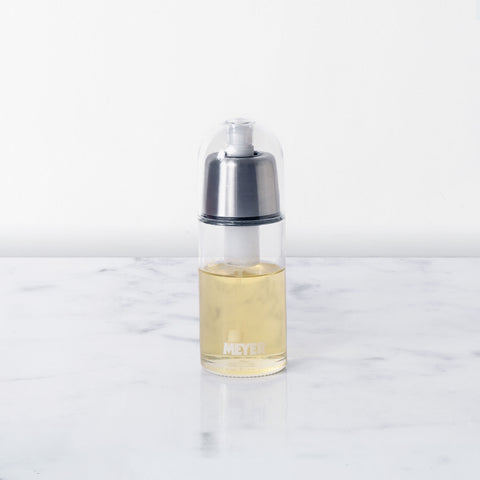Key Features
1. Seamless Stainless-Steel Construction
Crafted from premium, high-quality stainless steel, the Meyer Santoku Knife is built to last. The seamless, integrated blade and handle design not only enhances strength and durability but also gives it a sleek, sophisticated look — a perfect combination of function and aesthetics.
2. Superior Quality & Long-Lasting Performance
The knife is made from food-grade stainless steel, ensuring high corrosion and rust resistance. Its exceptional durability guarantees long-lasting sharpness and impeccable performance, making it a reliable tool for years of consistent use.
3. Precise Cutting for Culinary Perfection
Equipped with a fine tapered ground edge, this Santoku knife delivers meticulous, precise cuts that elevate the presentation of your dishes. From finely diced herbs to beautifully sliced vegetables and salads, it helps you achieve professional-quality results every time.
4. Multipurpose Versatility
This lightweight, all-purpose knife simplifies complicated kitchen tasks. Slice meat, prepare fine seafood cuts, chop vegetables, mince meat, or even create delicate garnishes — the Meyer Santoku Knife handles it all with ease and precision.
5. Ergonomic Handle for Superior Control
The stone-finished handle with a wielded half tang and half bolster design offers perfect balance, ensuring better control and a comfortable grip during cutting. It minimizes hand fatigue while providing stability for effortless, precise chopping.
6. Easy to Clean & Maintenance-Free
The monolith or integrated design of the blade and handle makes cleaning and maintenance simple. Without gaps or joints, the knife is extra strong, hygienic, and resistant to dirt or food residue, ensuring a long-lasting, easy-to-maintain kitchen companion.
Benefits
- Durable & Elegant: High-quality stainless steel construction ensures long-lasting performance and premium aesthetics.
- Precision Cutting: Fine tapered edge enables accurate slicing, chopping, and mincing for professional results.
- Multipurpose: Ideal for vegetables, fruits, seafood, meat, and garnishing tasks.
- Ergonomic & Balanced: Stone-finished handle with half tang design ensures superior grip and control.
- Hygienic & Easy to Maintain: Seamless construction prevents residue build-up and simplifies cleaning.
Ideal Uses
-
Chopping onions, garlic, ginger, and chilies for everyday cooking.
-
Slicing fish, chicken, and meat into fine, uniform pieces.
-
Dicing vegetables and fruits for salads and garnishes.
-
Mincing herbs and leafy greens for sauces, dips, or marinades.
-
Preparing seafood and delicate ingredients with professional precision.
-
Crafting clean julienne, chiffonade, or decorative cuts for elegant meal presentation.
Perfect for everyday kitchen prep as well as special culinary creations, this Santoku knife combines style, precision, and functionality in one versatile tool.
Use & Care Instructions
-
Wash the knife with mild soap and warm water before first use.
-
Hand washing is recommended to maintain the sharp edge and prevent corrosion.
-
Dry immediately after washing to ensure blade longevity.
-
Use on wooden or plastic cutting boards to protect the blade. Avoid glass, metal, or stone surfaces.
-
Store safely in a knife block, sheath, or magnetic strip to preserve the edge.



















